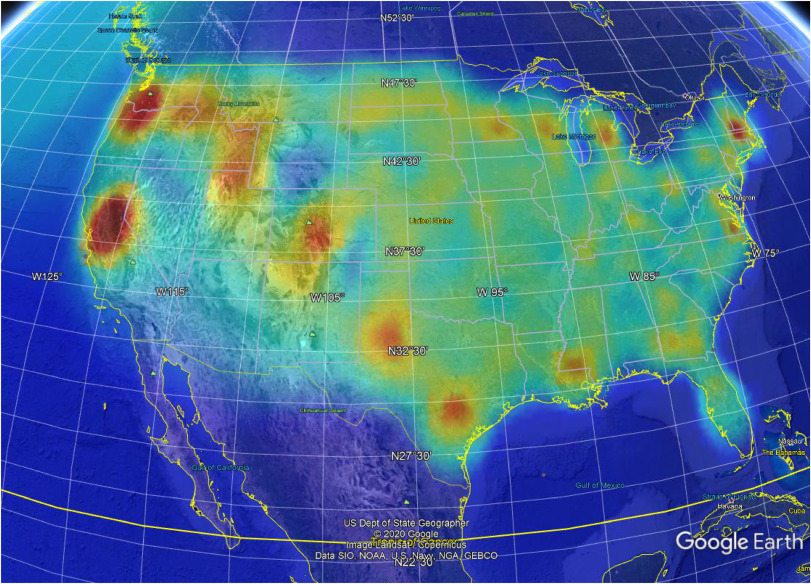
https://doi.org/10.1016/j.compbiomed.2021.104670
Masoud Asadi-Zeydabadia (a), Massimo Buscema (b,c), Weldon Lodwick (b), Giulia Massini (c), Francesca Della Torre(c) Francis Newman(b)
(a) Department of Physics, University of Colorado Denver, Denver, CO, USA
(b) Department of Mathematical and Statistical Science, University of Colorado Denver, Denver, CO, USA
(c) Semeion Research Center of Sciences of Communication, Rome, Italy
Abstract
The first case of COVID-19 in USA was reported on January 20, 2020. The number of COVID-19 confirmed cases and death has increased since the first reported case and the outbreak has appeared in all states. This paper analyzes disease outbreak using Topological Weighted Centroid (TWC), which is a data driven intelligent geographical dynamical system that models disease spread in space and time. In this analysis the COVID-19 cases in USA on March 26, 2020 as provided by Johns Hopkins University is used. The COVID-19 outbreak is mapped by the TWC method. We were able to predict and capture some features of the pandemic spread using the early data. Although we have used the geographical distance from the latitude and longitude coordinates, our results indicate that one of the main paths of diseases spread are arguably airline routes. In this analysis, we used a large set of data. A modified version of TWC, is named TWC-Windowing to elaborate the effect of data from all places.
